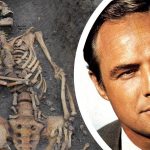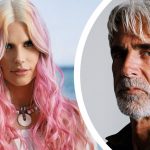Bruce Lee is an instantly recognizable name for all fans of films and/or kung fu. He found success in his native Hong Kong then caught the attention of American filmmakers.
Bruce enjoyed a fruitful career for years but never got to watch his most successful project, Enter the Dragon. He died suddenly at the age of 32 under mysterious circumstances.
The star’s official cause of death was cerebral edema brought on by a reaction to a painkiller. Not all of his fans, friends, and family accept this report, and a range of other theories have been created since his death. Join Facts Verse to learn more about the real Bruce Lee death story.
Like and subscribe for more on this celebrated icon. Watch our video for the real Bruce Lee death story and the theories that it’s spawned.
Bruce Lee’s Life and Career
Bruce Jun Fan Lee, whose Cantonese name was Lee Siu Loong, was born in San Fransisco on November 27th, 1940. He associated with dragons from a young age, being born in the year and hour of the Dragon.
Bruce starred as a child actor in 20 films during his childhood in Hong Kong. He also began studyingWing Chun kung fu at 13 while living there and became skilled in the art.
Bruce and his family returned to the U.S. when he was 18. He studied philosophy at the University of Washington and taught kung fu, eventually opening the Jung Fu Institute.
Bruce devoted himself to a strict fitness regime. He avoided drinking and smoking, took vitamin supplements, and drank raw hamburger meat.
Bruce was just as devoted to his acting career. His breakout American role was as Kato in the 1966 Green Hornet TV series. After it canceled the next year, he failed to find further success in the United States, so he moved back to his native Hong Kong to try acting there.
This move was one of the best decisions Bruce could have made for his career. He beat the record of the highest-grossing film in history 3 times with Karate to Death in Bangkok in 1971, Fist of Fury in 1972, and Way of the Dragon in 1972. These films propelled him to idol status in Hong Kong and made the American market take notice of his talent again.
In 1972, Bruce was filming Game of Death when he suddenly got a call from Warner Brothers. They offered him a role in the first joint production between Hollywood and Hong Kong. Bruce agreed, and the now famous film Enter the Dragon created and set to release at Hollywood’s Chinese Theater in August of 1973.
Bruce managed to find time to cultivate a family as well. He and his wife Linda raised two children, a son named Brandon and a daughter named Shannon.
Writer Marcos Ocana has published 3 books on Bruce Lee, the most popular of which is The Bamboo Warrior. He says that the public’s fascination with the star is the result of his philosophical character and Zen way of life. He believed in being able to adapt, a strategy that helped him overcome racism in Hollywood and other struggles.
Like and subscribe for more on the life and death of this massive star. Keep watching to learn about the official and unofficial explanations behind the film icon’s death.
The Official Explanation of Bruce Lee’s Death
Bruce Lee died at Queen Elizabeth Hospital in Hong Kong on July 20th, 1973 at the age of 32.
An initial investigation couldn’t determine the cause of death. Pathologists flown in from around the world to assess his condition.
The official ruling was that he took a prescription painkiller called Equagesic and had a hypersensitive reaction to an ingredient in it. This led to cerebral edema, causing him to fall into a coma that he couldn’t revived from.
Doctors believe that marijuana could have also played a part in his death. He had been using it for years, and it had previously landed him in the hospital.
Bruce’s doctor, Peter Wu, had treated him 3 months before his death. He suffered from headaches and seizures in May 1973 and told he had cerebral edema. He’s flown to the hospital and had a grand mal seizure.
Peter says Bruce was in critical condition at the time due to ingesting hashish, a substance proven to cause cerebral edema. Despite warnings from the doctor, he continued to take it because of the severe stress he was under.
When the swelling in his brain cleared, Bruce released from the hospital and made a trip to Hong Kong. He went to the home of Taiwanese actress Betty Ting Pei. She admits she was his girlfriend and that there was sex involved.
While in each other’s company, the two talked about a future film titled Game of Death, and he began to get into character. She admits that he overexerted himself. He’s tired and dizzy and began to complain of a headache, so she allegedly gave him a painkiller known as Equagesic.
Soon after taking the medication, Bruce collapsed onto the bed. When he couldn’t get back up, she attempted to revive him for at least 10 minutes. That didn’t seem to help, so she called her personal doctor. He eventually sent to a hospital 30 minutes away.
Bruce had likely already died before they made it to the hospital. The trip provided time to call his wife Linda and get her to come to the hospital. The workers there were sure someone must be joking when they found out the identity of their patient.
Bruce had taken Equagesic before, making the idea that he had a hypersensitivity to it seem a bit suspicious. His doctors believed that his low percentage of body fat could make him more sensitive to drugs and warned him against taking hash. However, there is no strong evidence linking cannabis to brain edemas, making cannabis intoxication an unlikely explanation.
False death reports were released to protect Bruce’s image and family. His production company said he died walking in the garden with his wife, and the hospital sent out a release pointing to cerebral edema. Ting Pei supported the fabricated stories, and his visit to her house was portrayed as a business meeting for the film Game of Death.
The true cause of death was eventually released to the public. It’s unclear how it affected his family, but it had a major impact and created a shockwave throughout his massive fanbase.
Other Theories
Fans, friends, and family often refuse to accept the official explanation when a major star like Bruce Lee dies suddenly. Other theories about his true cause of death range from attacks by Chinese gangsters to love-related issues to health conditions to poisonings to a family curse.
A few of these theories tested and reported on. A Hong Kong photographer bribed a morgue worker to take pictures of Bruce’s corpse and see if the allegations that he died with an erection were true. They noticed his face bloated, and this evidence hinted at poisoning.
Official reports also came out with alternative explanations. In 2006, the Taipei Times said he had an unknown epileptic condition. In the 2008 book Bruce Lee: Legends of the Dragon, the idea of heatstroke suggested. The weather on the day of his death was a sweltering, humid 90 degrees. Bruce had also allegedly had his armpit sweat glands remoted to avoid looking sweaty on camera.
Chuck Norris was Bruce’s friend and believes that other medications he was taking, including muscle relaxants, stimulants, and herbal supplements, may have played a part in his death. It wasn’t even clear how much he was taking, and any pill or supplement could have created a deadly interaction with the Equagesic he took just before his death.
Donald Langford, one of the doctors who treated Bruce, is also a bit skeptical about the official report. He claims that “no painkiller killed Bruce.” He is of the opinion that the Chinese doctors and citizens around him wanted to create the least embarrassing explanation as to why their local hero had died.
Ocana knows a great deal about Bruce Lee due to the many books he’s written on his life and career. He says that marijuana may have played a part in Bruce’s death because it involved in his first case of cerebral edema.
Another popular theory is that Betty Ting Pei may be the true culprit. She asked why she didn’t take him to the nearest hospital a minute away from her house instead of one that was 30 minutes away and testified in court that she “didn’t think that was important.” Fans believe she may have poisoned him to appease a secret society that wanted him dead.
Rumors state that Bruce may have pursued by the Chinese mafia. He may have refused to pay the Triad money in exchange for protection. Allegations also suggest that he killed by a member of the Dim Mak coup who didn’t appreciate him using kung fu in the West to become rich and famous.
A few rumors paint the star in an unfavorable light, which may be why they’re some of the least popular. Reports allege that Bruce may have taken a powerful aphrodisiac and lost control in the presence of a prostitute who killed him in self-defense.
The idea of a Lee family curse is one of the most prevailing theories among fans and family members. It began when he was born after the mysterious death of his older brother. Chinese superstition considers this an ominous event.
The alleged curse continued when his son Brandon died on the set of the film The Crow at the age of 32. A prop gun mysteriously fitted with a real bullet instead of a blank. It’s another sudden death that fans have attempted to create alternative explanations for.
Bruce Lee’s sudden death shook his massive fan base and the entire country of Hong Kong. His kung fu and acting skills combined to make him one of the most famous Asian film stars of all time. Do you think any of the wild theories surrounding Bruce Lee’s death could be true? Let us know in the comments below. Like and subscribe for more on the life and death of all your favorite martial arts film icons.


